There have been several widely publicized pet food recalls in recent years for various reasons. One of the most common reasons for recalled pet food is aflatoxin contamination in dog food. As a good pet owner, you want to know precisely what aflatoxin poisoning is and how it can hurt your dog.
These are important questions since aflatoxin toxicity can lead to serious health problems as well as death. Let’s begin with the basic information about just what causes aflatoxin poisoning.
What is Aflatoxin Anyway?
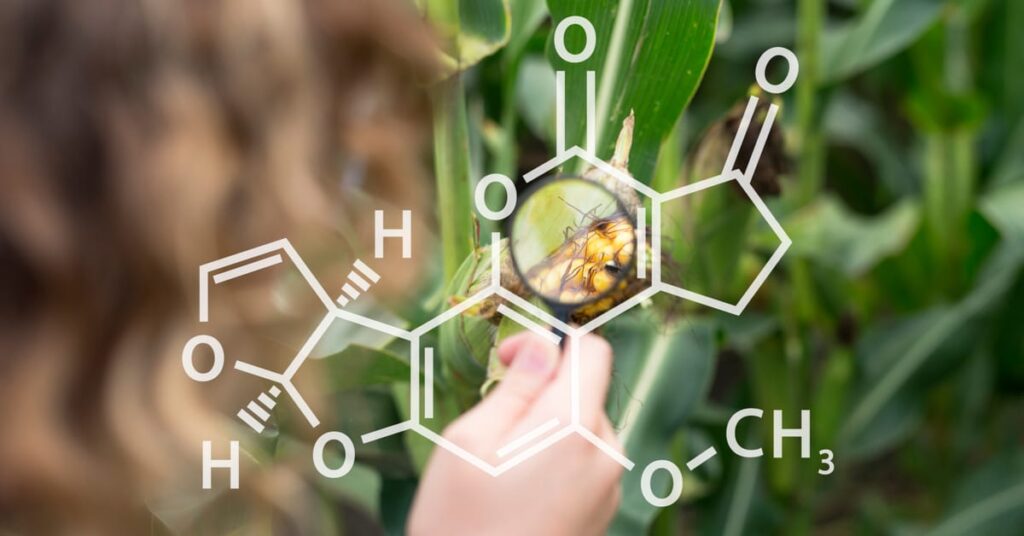
Aflatoxin is a mycotoxin produced by the common food mold Aspergillus flavus. This mold can grow on the surface of cereal grains that are common pet food ingredients, including wheat, millet, sorghum, rice, and corn.
The problem is not the wheat grains, nor is it the mold itself; rather, the problem is this mycotoxin produced by the mold. If it is present in contaminated food, it can be lethal to your best friend.
Another problem is that aflatoxin is invisible. It can’t even be seen with a high-powered microscope, and it can still be present even if you don’t see any visible signs of mold on the food.
What’s more, aflatoxin is not a living organism like bacteria such as salmonella. It’s actually a poisonous chemical that can’t be killed or cooked away. It’s heat-resistant and can survive pasteurization which is required by law for makers of canned dog food.
That’s why fatal levels of aflatoxin can still be found in unopened cans of wet dog food and sealed bags of dry kibble. That’s part of what makes aflatoxin poisoning the most commonly cited reason for dog food recalls.
How Toxic is Aflatoxin?

It’s bad, real bad. In fact, aflatoxin is considered the most toxic of all mycotoxins. What’s more, there is no known cure. Once it gets into your dog’s body, there isn’t any way to get it out.
How quickly your best friend reacts to eating contaminated food depends on the concentration of aflatoxin in the pet food product. Another problem is that, unlike people, dogs tend to eat the same thing over and over again, so the concentration levels can build up quickly.
Think about it; you probably feed your dog food from the same bag or bin until it’s gone. If that food is contaminated with aflatoxin, your dog will be eating high levels of aflatoxin. It might already be in your pet’s system, and if the levels get high enough, your dog will begin to show symptoms.
What Does Aflatoxicosis Do to Dogs?
Aflatoxin is very toxic to your dog’s liver. The liver’s job is to clean out toxins that get into the body, but aflatoxin poisoning can destroy the liver resulting in liver failure. It’s also the number one cause of liver cancer in dogs.
If your dog is exposed to high levels of aflatoxin, he might have an acute response that is sudden and severe. In fact, it can happen so quickly that he could die before you can get him to the vet for treatment.
The other way he can be affected by aflatoxin poisoning is with lower doses of this deadly mycotoxin over a longer time period. This is just as deadly because the poison accumulates in his body which is what can ultimately cause liver cancer.
What are the Symptoms of Aflatoxin Poisoning?
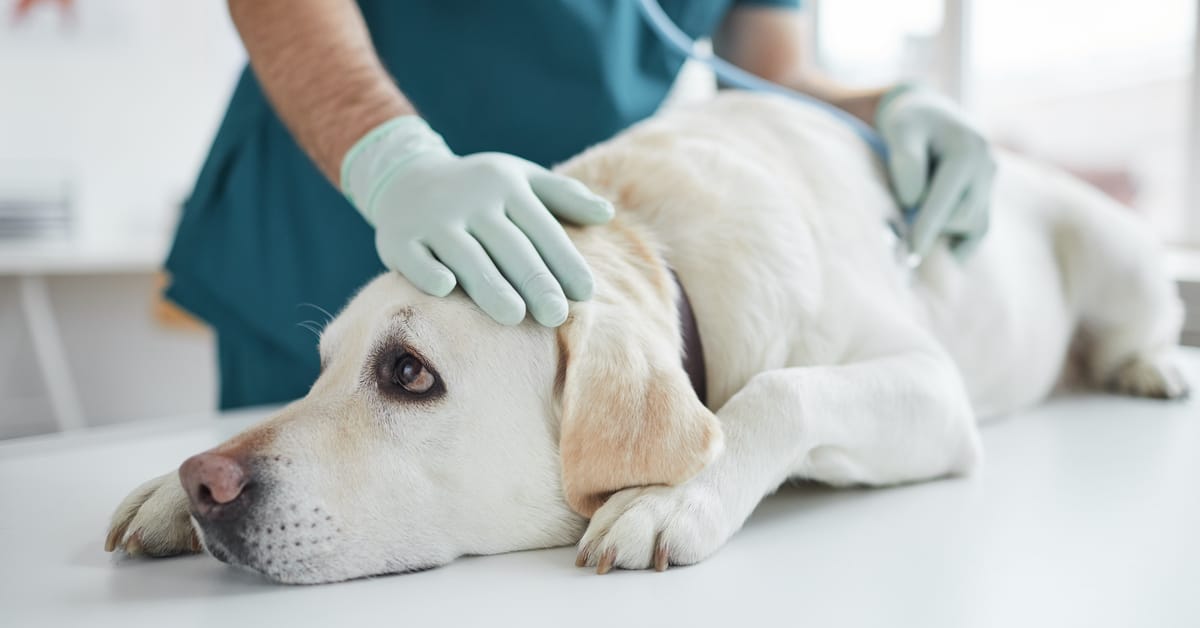
Symptoms of acute aflatoxicosis include:
- Sudden loss of appetite
- Vomiting
- Weakness
- Lethargy (sluggishness)
As discussed above, acute aflatoxin poisoning results in liver failure, and it is fatal.
If a necropsy (autopsy on an animal) is done, the pathologist will often find areas of tissue death in the liver along with an overgrowth of the bile duct. It’s very traumatic for both the animals and the pet owners.
If your pet is chronically accumulating aflatoxin in his system, he’ll likely experience symptoms that include sluggishness, vomiting, loss of appetite, and jaundice (a yellowish tint to the skin or eyes as a result of liver damage).
Other signs of illness include unexplained bruising or bleeding and diarrhea. It’s not uncommon for aflatoxin poisoning to affect the ability of your dog’s blood to clot properly. It’s also possible, however, that some pets may just present with liver damage without having shown any other symptoms of aflatoxin poisoning.
It goes without saying that if a dog showing signs of illness continues to eat contaminated food, he may die suddenly once the levels of the poison get too high. If you suspect that your pet might have been exposed to high levels of aflatoxin, you need to stop feeding your dog food and get him to the vet immediately.
The urgency cannot be underestimated given how deadly aflatoxins are and how quickly they can cause problems.
Are There Different Types of Aflatoxin?
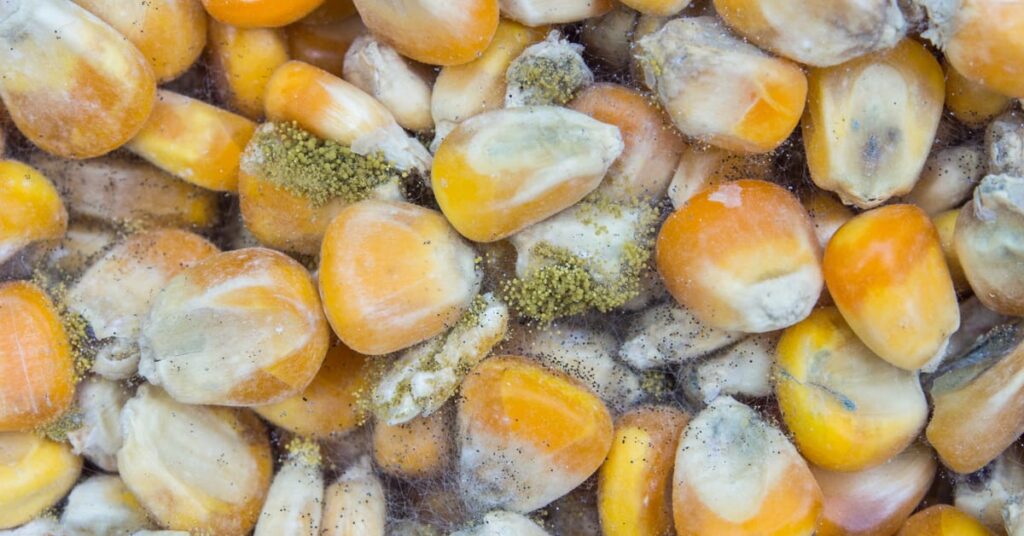
As it turns out, there are different kinds of aflatoxins. The most potent of the mycotoxins is Aflatoxin B1. It is the mycotoxin compound that researchers have found can lead to liver cancer in both humans and animals.
This toxin is so dangerous that researchers have highlighted the need to create new detoxification methods to reduce the risk of Aflatoxin B1 poisoning. It is actually a danger for the global food supply, and not just for pets, but for pet owners too!
What’s more, Aflatoxin B1 is the documented cause of the death of large numbers of poultry, including turkeys, ducks, pheasants, and chicks in the United Kingdom in the 1960s. It killed more than 100,000 young turkeys.
While Aflatoxin B1 is the most potent of these mycotoxins, there are also several other variants, including Aflatoxins B2, G1, G2, M1, M2, B2A, and G2A. While there is no evidence that handling pet food contaminated with aflatoxin will put you at risk of toxicity, you should take care to wash your hands well after handling dog and cat food.
How Can You Prevent Aflatoxin Poisoning in Your Dog?
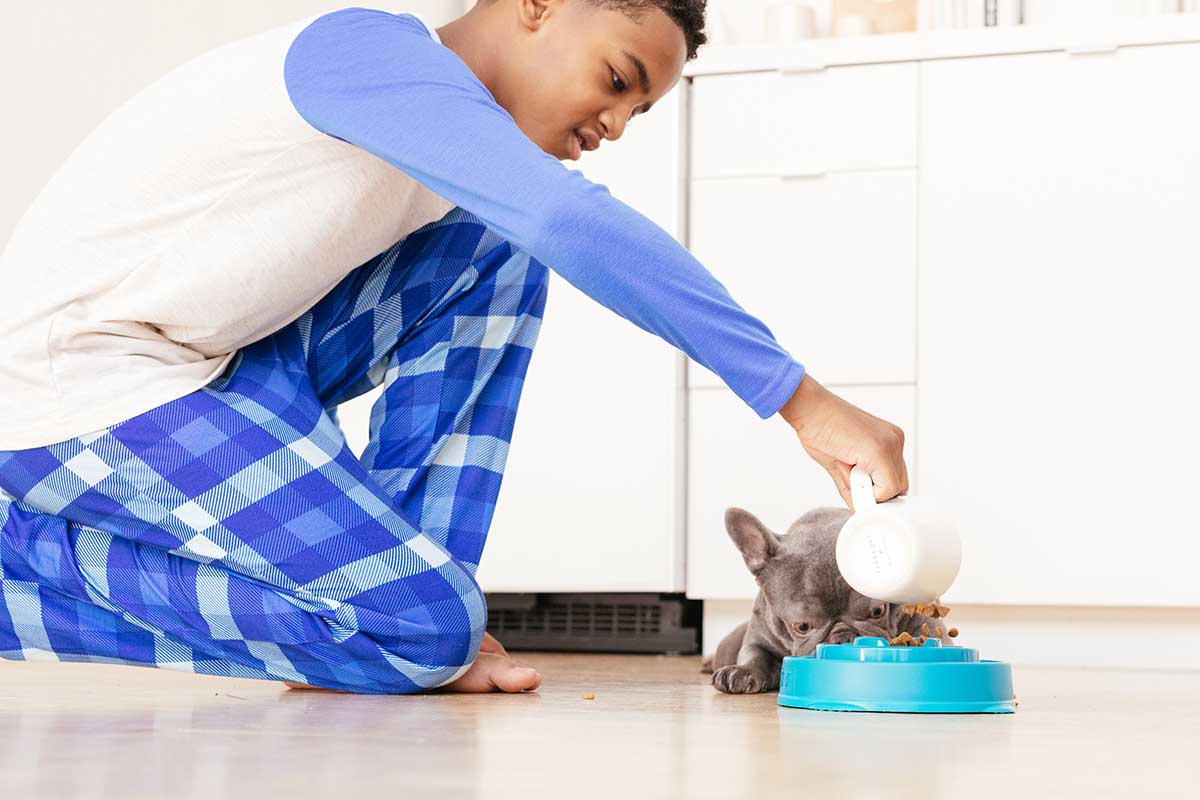
There is no cure for aflatoxin poisoning, so the best thing to do is to prevent your dog from eating contaminated pet food. Of course, you may not know the food is contaminated until your pet is showing signs of illness.
Stop Feeding and Report It!
If you do find out your dog has been poisoned, you’ll want to stop feeding the dog food immediately, and the U.S. Food and Drug Administration (FDA) also recommends you report the contaminated food. They have created a safety reporting portal that streamlines the process of reporting food safety issues.
To report suspected contamination, you’ll want to record the following information:
- The exact name of the product and product description (as stated on the product label)
- Type of container (e.g., box, bag, can, pouch, etc.)
- Was the product intended to be refrigerated, frozen, or stored at room temperature?
- Lot number and lot codes — This can be difficult to find, and when you do find it, it can be hard to read. It’s stamped into the packaging and contains both letters and numbers. You’ll always find it close to ‘best by/before’ or expiration date. The lot number is vital for helping the FDA determine the manufacturing plant where the pet food product was produced and the date it was made.
- Best by, best before, or expiration date
- UPC code (also known as the bar code)
- Net weight
- Purchase date and exact location where purchased
- Results of any laboratory testing performed on the pet food product
- How was the food stored, prepared, and handled?
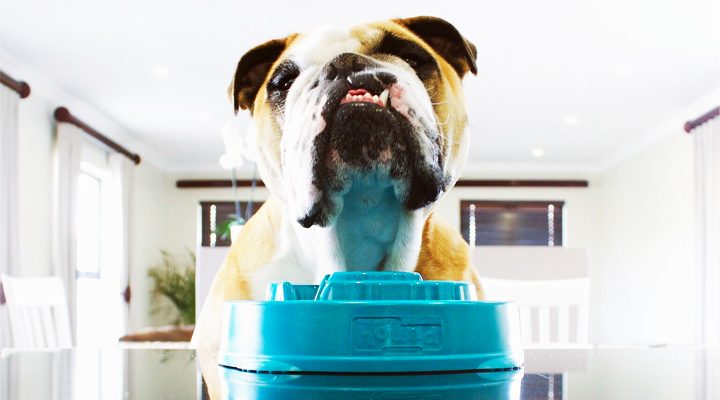
The other features of the dog food you’ll want to report are whether it had any strange color, odor, or if it was in a leaking or swollen container. You should also note if it had any foreign objects in it.
If your pet was sickened after eating contaminated food, you’ll want to provide information about the species of pet you have, their age, weight, breed, and reproductive status, their previous health status, any pre-existing conditions your pet has, and whether you have given them any additional products like treats, supplements, or drugs.
You also want to report how much of the contaminated food your pet normally eats, how much was consumed from this particular package, how much you still have, the signs of illness your pet has shown as well as how soon after consumption the symptoms began.
Finally, you should be prepared to provide your veterinarian’s contact information and the medical records for your pet, including any diagnostic laboratory tests performed on him. Many times, aflatoxin poisoning can only be diagnosed with tests conducted on pet food samples, so save a sample of the food you suspect is contaminated.
Check Frequently for Recalled Products
Another thing to do to keep your pet safe is to check frequently for recalled products. Again, look for the lot number and the dog food brands affected by the recall. You’ll also want to check for specific locations where the contaminated food products were sold.
Your animal’s health is important to you, and while it adds a little more work to your plate, keeping up on pet food recall information can literally save your dog’s life.
Final Thoughts

Your best friend is relying on you to provide him with safe food, warm shelter, and lots of love. As a good pet owner, you want to make sure he is around as long as possible. That’s why you want to be on the lookout for pet food recalls involving aflatoxin poisoning. It’s common, it’s hard to detect, and it’s lethal, but knowledge is power, so stay informed to keep your pet healthy.

